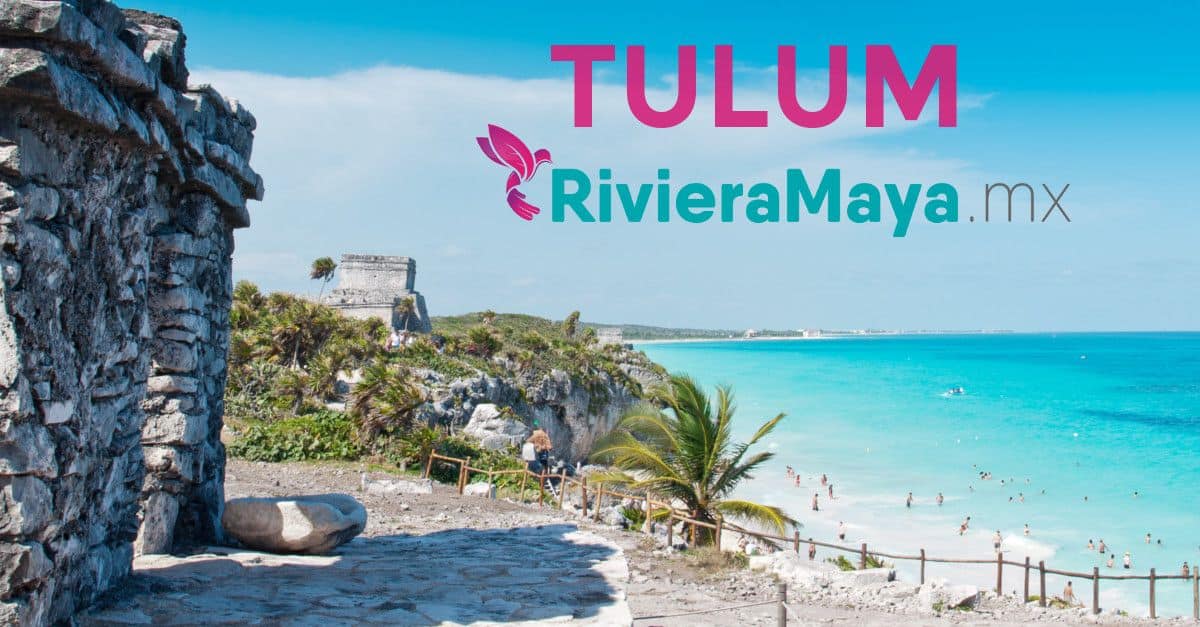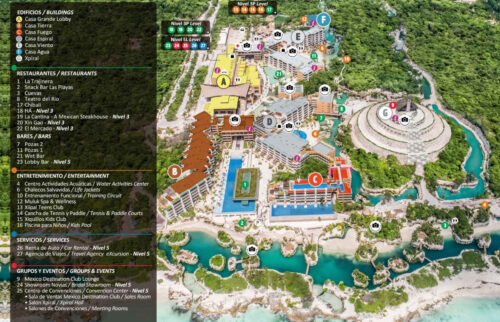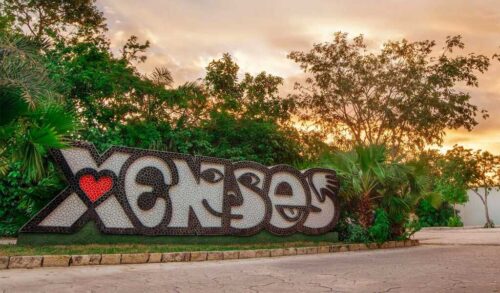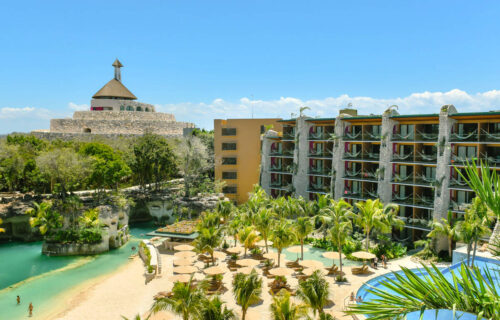Tulum is one of the best-known jewels of the Riviera Maya, it’s no wonder, its Mayan essences and Caribbean flavor combined with a relax and ecologic environment make it a great destination with attractions and activities to fit all budgets and all testes.
To help you decide what to do and what to visit in Tulum we share with 10 excellent options to plan your visit to Tulum:
Tulum archeological site.
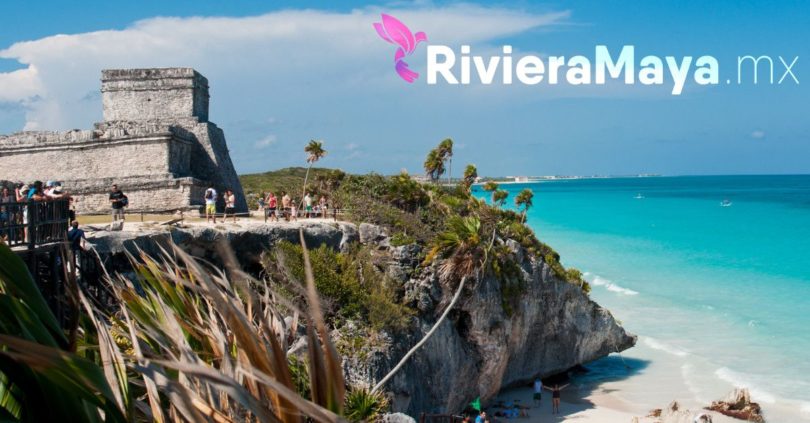
Zona arqueológica de Tulum. Foto de rivieramaya.mx
The Tulum archeological site is a must when visiting Tulum. These well preserved old city ruins are located in a privileged place in front of the Caribbean sea.
Founded more than 1500 years ago, this city was originally called “Zamá” (dawn, in the Mayan language) and then changed to Tulúm (wall, in the Mayan language), its main role was to serve as a commerce hub but as a military base and astronomical observation center.
Besides the historical city, don’t forget to bring your beach clothes because there are outstanding beaches inside the archeological site and some aquatic activities.
Playa Paraiso and other beaches around Tulum.
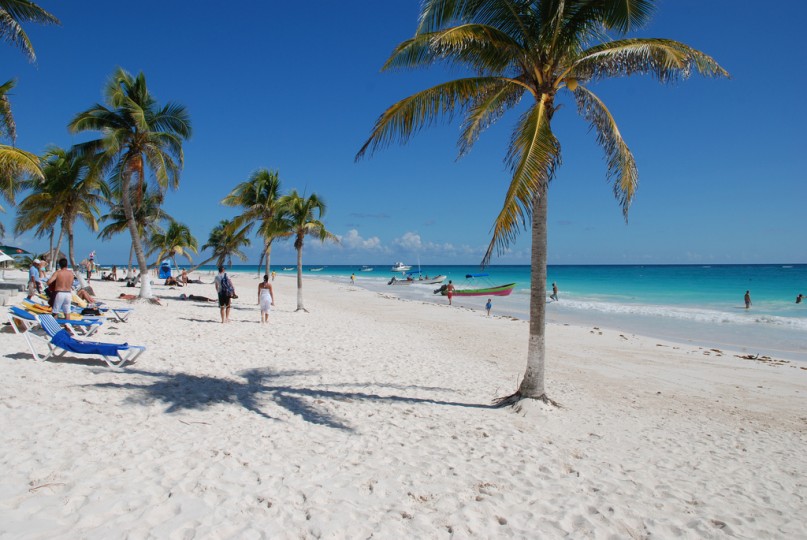
Playa Paraíso, Tulum. Foto de Diriye Amey. CC.
The beaches in Riviera Maya are gorgeous, but Tulum’s beaches stand out on its water clarity, its intense turquoise color, and its abundant fauna.
Although in recent months some beaches have been stained by the present of sargassum, this happens just on some beaches and is a temporal phenomenon.
Cenotes.
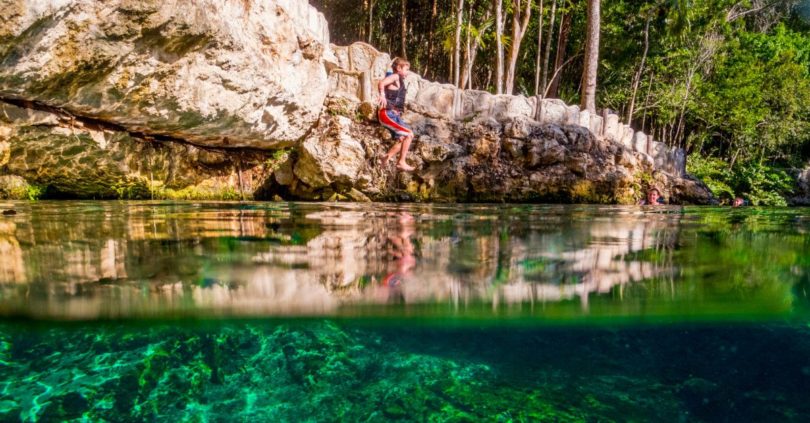
Cenote Tortuga. Foto de Aaron Hawkins. CC.
Cenotes are natural ponds formed by the collapse of soil by the action of subterranean rivers that carry crystalline fresh water all across the Yucatan Peninsula. Around Tulum there are a big number of them, some examples are:
- Cenote Dos Ojos. It’s a semi-open cenote that appears to be separated in two circles.
- Gran Cenote. Ideal to swimming and diving. It has caves where to can get to see bats and toucans (from January to February).
- Blue Cenote or Cenote Azul. It’s a wide cenote, ideal to swimming, diving, and snorkeling, easy to access and family friendly.
- Zacil-Ha. It’s also a family friendly cenote, with all needed services to enjoy swimming, snorkeling, and even diving.
Sian Ka’an national park and Muyil archeological site.
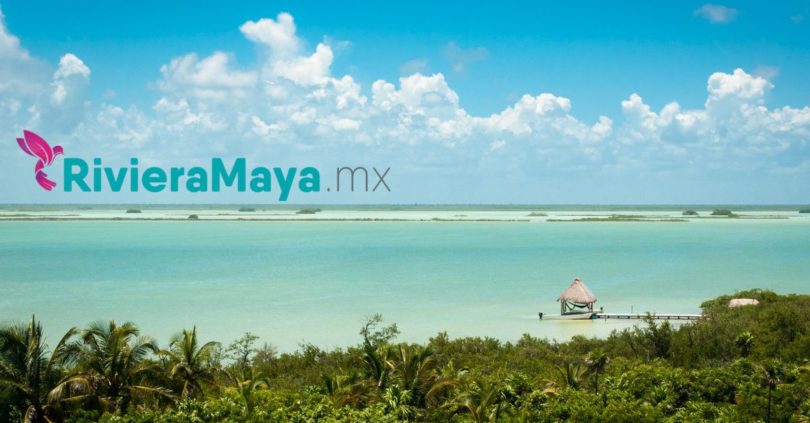
Reserva de Sian Ka’an. Foro de rivieramaya.mx
Sian Ka’an (‘heaven’s gate’ in the Mayan language) national park is located 10 kilometers (6.2 miles) south Tulum, thanks to its status of national park it have escaped the influence of massive tourism and it still a refugee to local fauna and flora. Some of the activities you can enjoy in Sian Ka’an are:
- Kayaking, to enjoy the view and sight a big variety of birds and fishes.
- Floating on the canals used by the Mayans for commerce.
- Enjoy semi-virgin beaches.
- Boat tours around the lagoon.
- Visit the undervalued Muyil archeological site.
Xel-há.
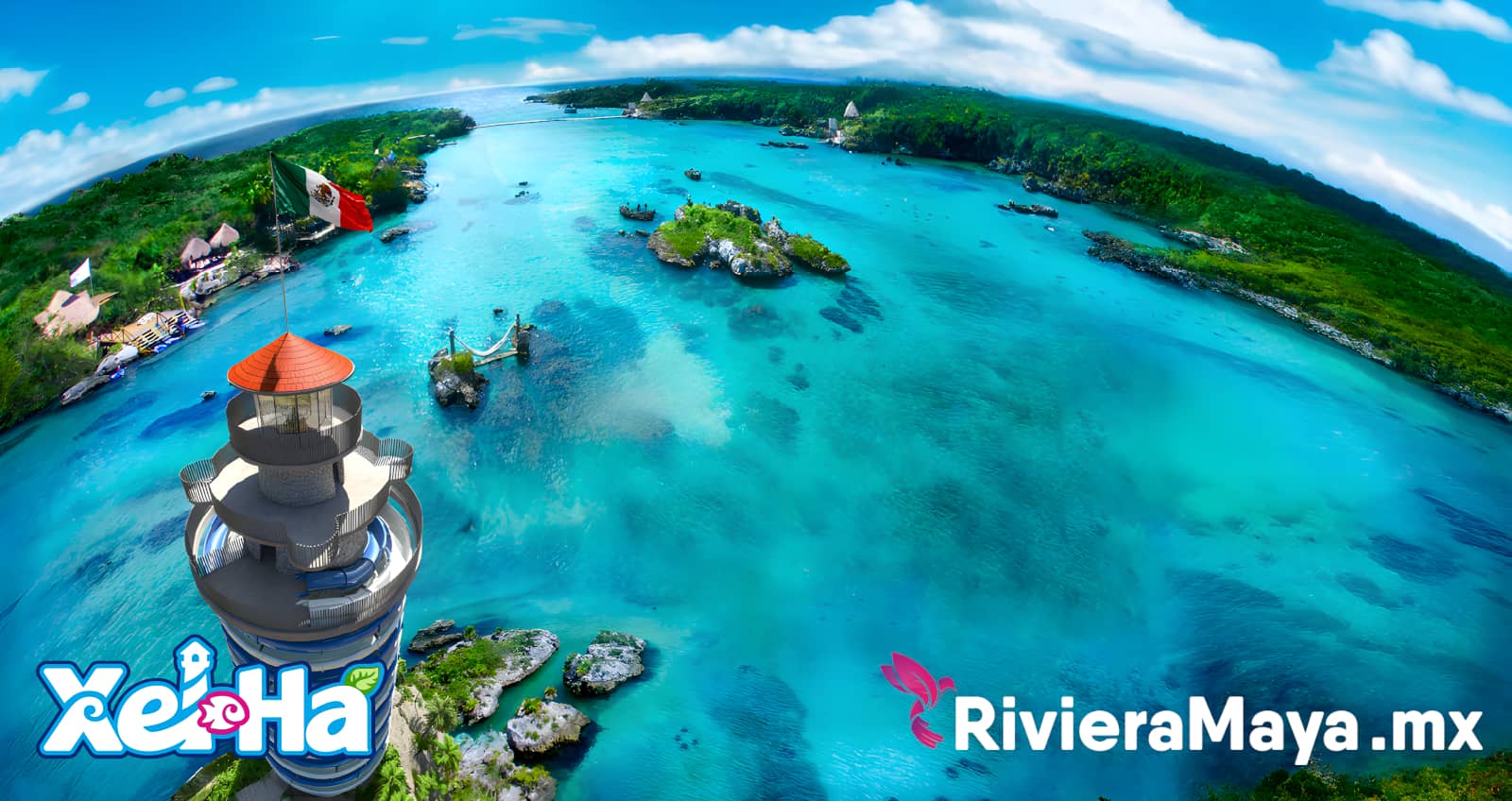
Xel-há park.
The theme parks by Xcaret have become a must experience in Riviera Maya.
Located just 15 kilometers (9 miles) north Tulum, Xel-há is an aquatic-ecological theme park with a bit variety of activities for the whole family. Slides, an iconic lighthouse, snorkeling, diving, cave exploring, routes for biking and trekking, natural lazy rivers, spaces for relaxation and more, all included in your ticket.
Official site: Xel-Há
Tulum town.
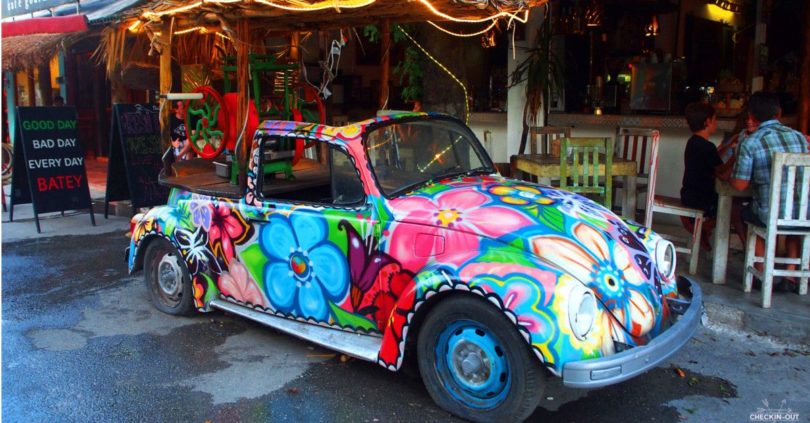
Tulum pueblo. Foto de Checkin-out.
Tulum isn’t only beaches, this small community has a big gastronomic offer, from the most exotic international food to the most authentic Mayan cuisine. Tulum still keeps the feeling of a small and peaceful place that invites you to walk and look for the perfect souvenir or the trendiest beach clothes.
Chichen Itza.
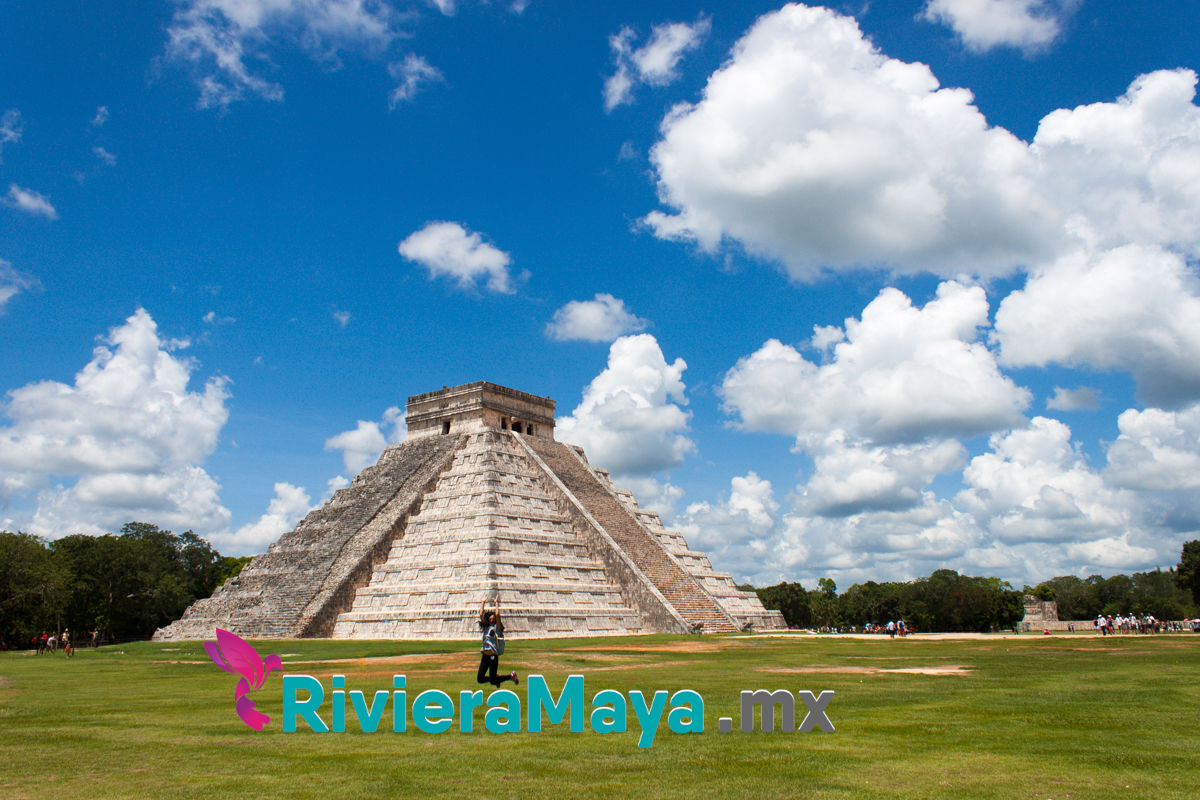
Kukulcan’s temple, Chichén Itzá. Photo by RivieraMaya.mx
Considered one of the seven new world wonders, the Chichen Itza archeological ruins are a majestic vestige of the Mayan culture at its best. Its buildings are more than 1200 years old and are part of the UNESCO’s world heritage sites list since 1988.
Some of the points of interest are Kukulcan’s temple (also called “El Castillo”, the castle), the sacred cenote, the snail or astronomical observatory, the skulls wall, the ball game court, the warrior’s temple or temple of the thousand columns, etc.
Located 150 kilometers (93 miles) from Tulum, Chichen Itza is an excellent opportunity to discover more about the vast Mayan culture.
Bacalar.
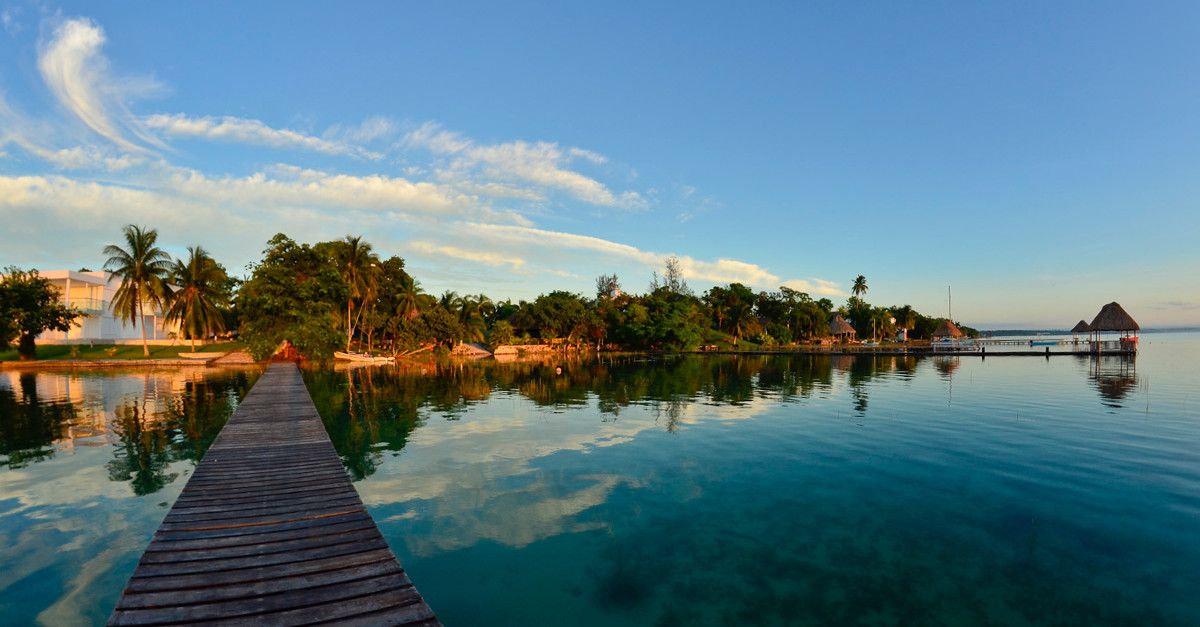
Laguna de Bacalar. Foto de Sergi Hill. CC.
The Bacalar lagoon or the lagoon of the seven colors is located 200 kilometers (124 miles) south from Tulum, in the town with the same name.
The big range of colors in the water, combined with the hues of the sunrises and sunsets will provide you with tons of photos to share in your social networks.
Boat tours, cenote snorkeling, diving in the pirates’ canal, trekking to the San Felipe fort and taste of the freshest seafood are just some of the activities you can do here.
Coba.
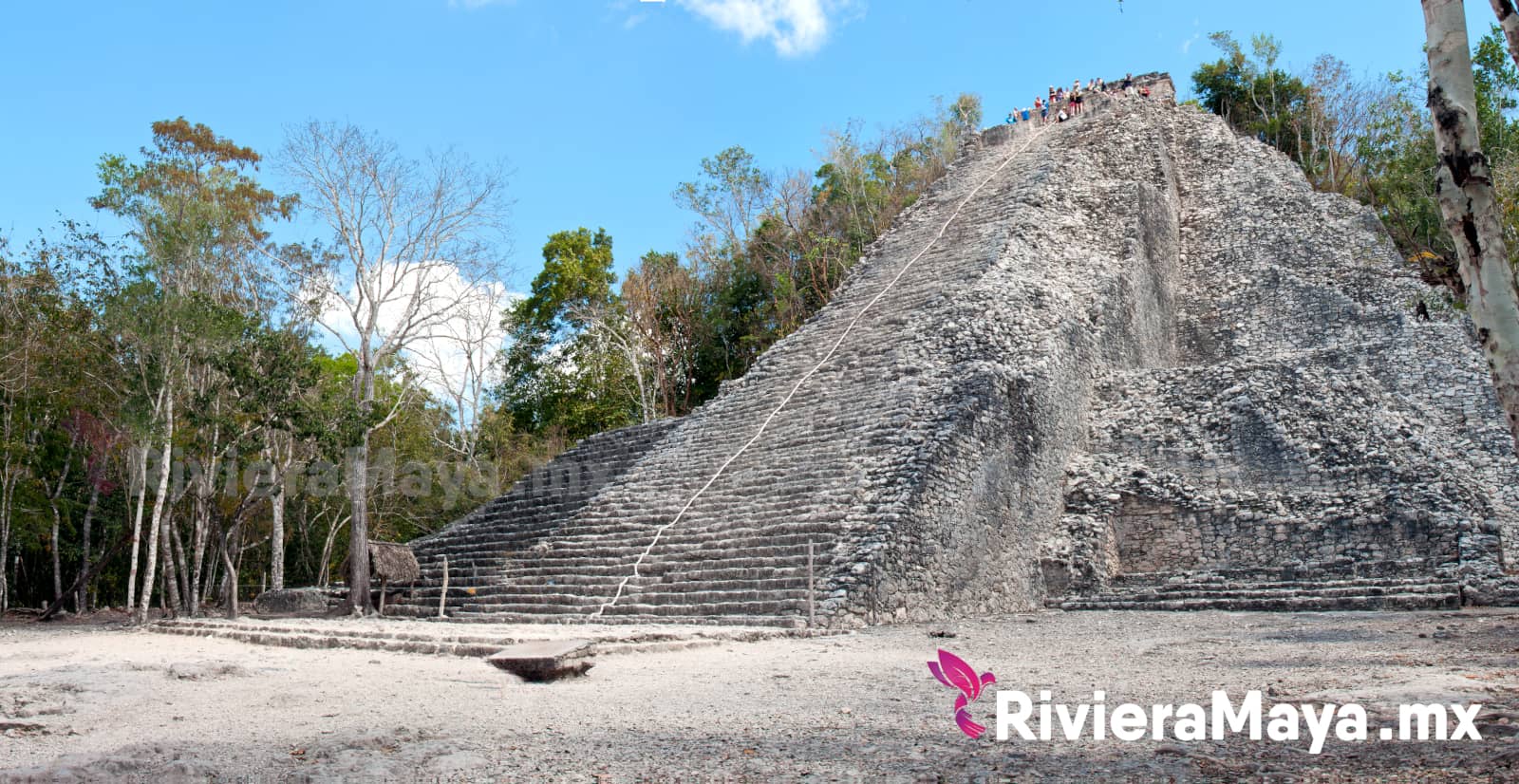
Nohoch Mul temple, Coba. Photo by RivieraMaya.mx
The Nohoch Mul pyramid inside the Coba archeological site is the tallest Mayan buildings in the whole Yucatan peninsula. This very wide archeological zone is located just 50 kilometers (31 miles) from Tulum. It got to be home to 50 thousand people and is more than 1500 years old.
Beside climbing the majestic Nohoch Mul pyramid, you can visit the astronomical observatory, walk or bike the countless paths, all without big crowds.
Mahahual.
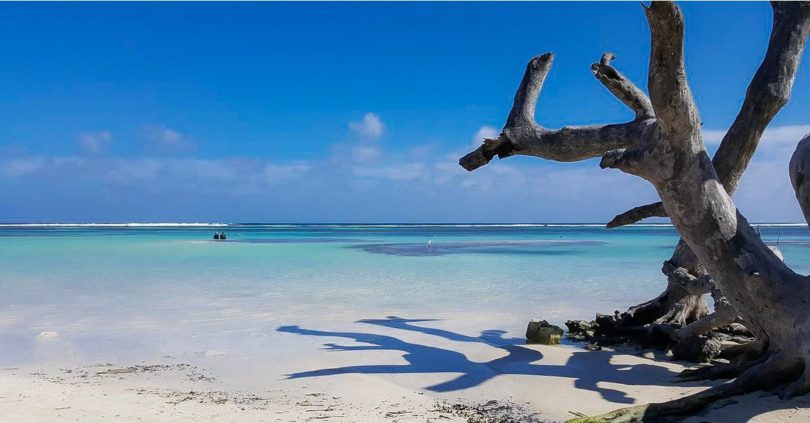
Playa de Mahahual. Foto de junaidrao.
If you are looking for a place to just chill, more like a fishers village but with all the services and the beauty of the Caribbean sea, then Mahahual is for you. Mahahual is a beach destination, great for swimming, snorkeling, diving, relax on a hammock or in a local small beach club.
But if you are looking for some adrenaline, close by you have the park theme “Lost Mayan Kingdom”.
¿How many of the list have you visited?
